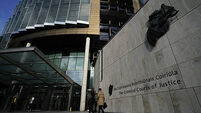Lots of rhetoric but house prices untamed

Indeed, anecdotally, we are seeing quite a number of ‘For Sale’ signs going up around the country, and particularly in Dublin.
The other positive from rising prices is that the economics of house building improves and this could elicit more new housing supply from developers.

















